October is American Archives Month, so we’re putting a spotlight on our archivists at the Carondelet Consolidated Archives. They are responsible for preserving and sharing the history, spirit and memory of the congregation. To learn more about our archivists and the history stored within the archives, we asked each of our archives staff members to take a picture with their favorite artifact.
Letter from a Prisoner of War Camp
Sally Budge, Assistant Archivist at the Carondelet Consolidated Archives, selected a letter from a prisoner of war camp in Shanghai that was found in a scrapbook within the Hawaii collection. Sister Adele Marie Lemon received this letter that was written on April 13, 1944, by a former pupil.
Here is the page of Sister Adele Marie Lemon’s scrapbook where she glued the POW letter from her former student.
The page also features images of Sisters in Hawaii as well as a “Best Wishes” greeting card from the Philippines.
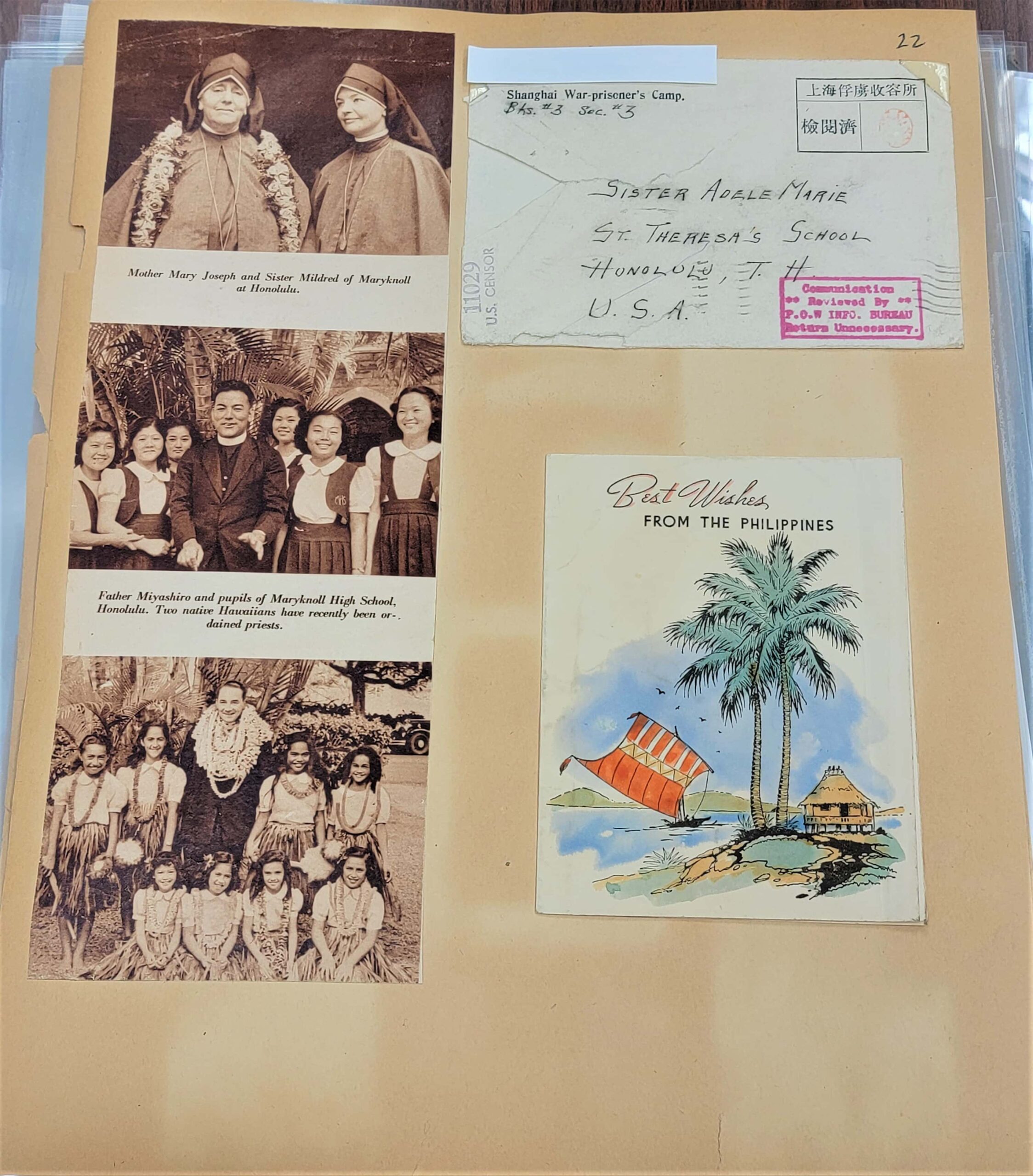
The letter was tucked away in the original envelope which was glued to the pages of a scrapbook. Sister Adele Marie used the scrapbook to document the war years in Hawaii, having arrived in Hawaii in 1938 on the cusp of World War II. On the envelope, one can see the censor stamps of the United States. On the letter itself is a stamp from the Japanese censors. The letter is written on a very fine rice paper.
Shanghai had several internment camps during World War II, but most were dedicated to civilians, who had been in Shanghai for various reasons. There was one camp, Woosung POW Camp, that housed actual prisoners of war, which is most likely where this young man was held and where this letter originated.
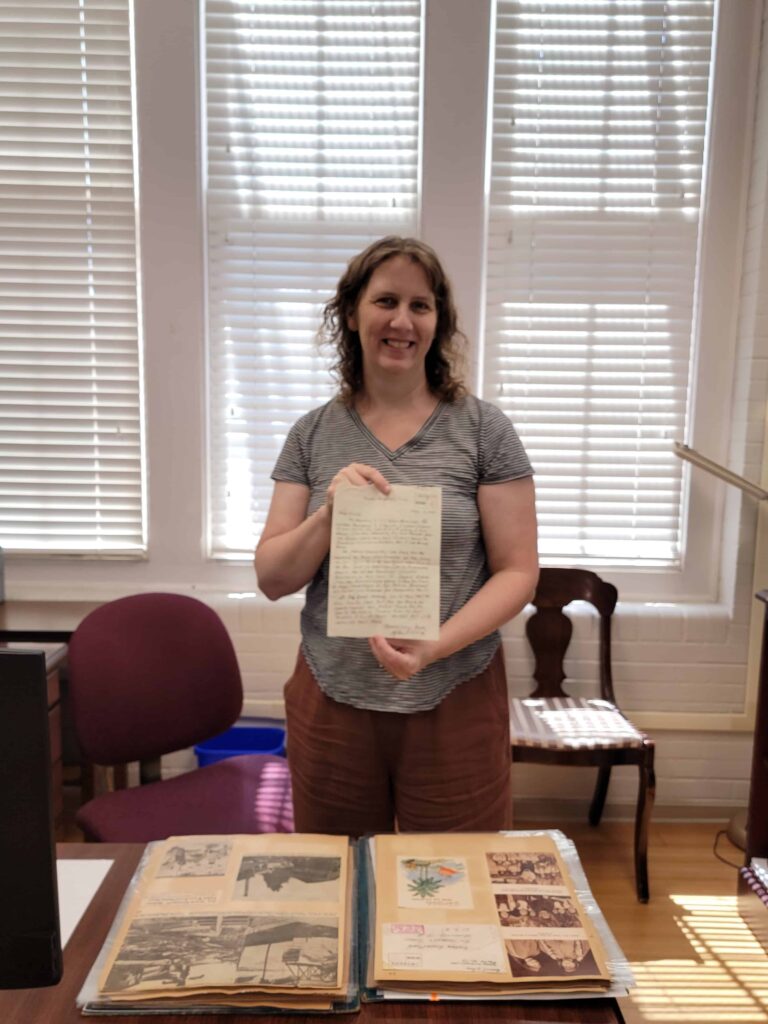
Sally explained why the POW letter is her favorite artifact:
“As someone who loves history and is fascinated by the untold, little stories that give big events a deeper meaning, the discovery of this letter was a glimpse into the events of WWII that made it more personal for me. The scrapbooks, themselves, are a treasure trove of a firsthand witness to monumental events going on in the world at the time. This personal connection of a Sister and a former student, who was a world apart and experiencing who knows what, but who took the time to thank the Sisters in a letter, is what makes history come alive.”
Clock Hands from the Carondelet Motherhouse
Meghan Lewallen, Archives Technician, chose wooden clock hands from the Carondelet Motherhouse in St. Louis as her favorite artifact.
The clock tower at the Carondelet Motherhouse with the original wooden clock hands.

The wooden clock hands were a part of the Motherhouse’s courtyard clock tower from the late 1890’s all the way to 2004 when they were finally replaced.
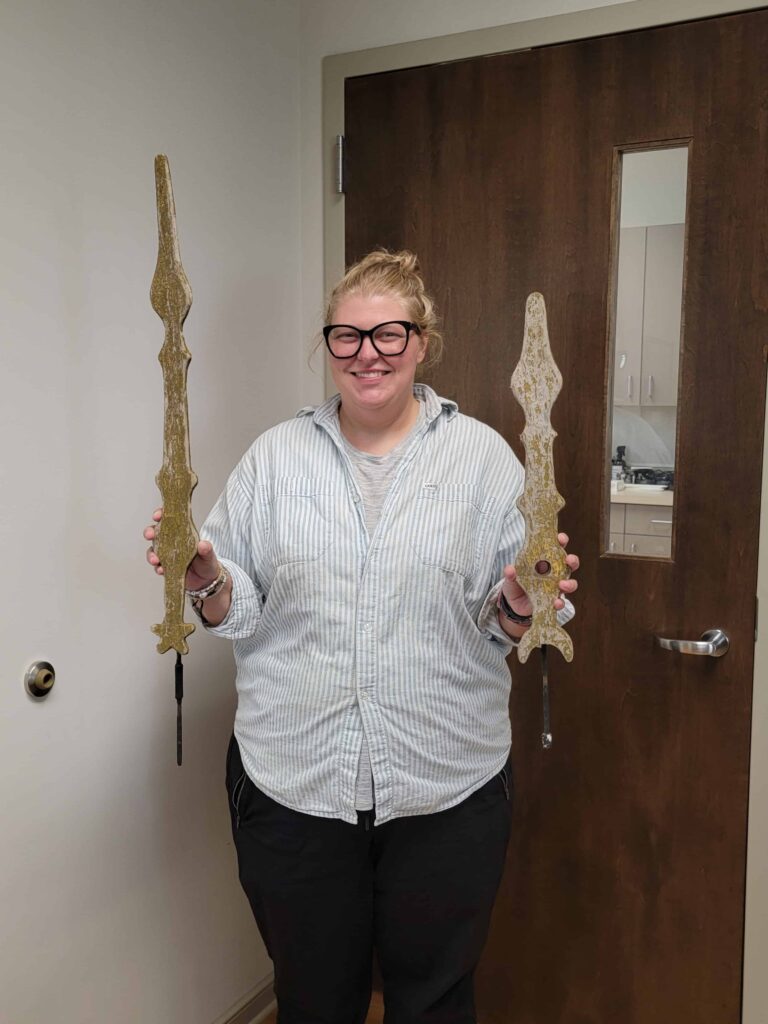
Meghan wrote:
“I chose the wooden clock hands from 1890 as my favorite archive artifact. I can’t believe that they were used here in St. Louis at the Motherhouse in the courtyard from the late 1890’s till 2004 when they were replaced. It just amazes me the history the clock hands have witnessed. I always think of the people that have passed by the clock tower from the girls who attended the early years of St. Joseph’s Academy to the sisters who lived at the Motherhouse and the stories they have.”
Japanese Furoshiki (Wrapping Cloth)
Catherine Lucy, Director of the Carondelet Consolidated Archives, selected a furoshiki (wrapping cloth) from Tsu, Japan. The cloth was given out on the occasion of the opening of St. Joseph Joshi Gakuen, a school for girls, in 1959.
To commemorate the opening of St. Joseph Joshi Gakuen, the furoshiki depicts an image of the exterior of the school building.
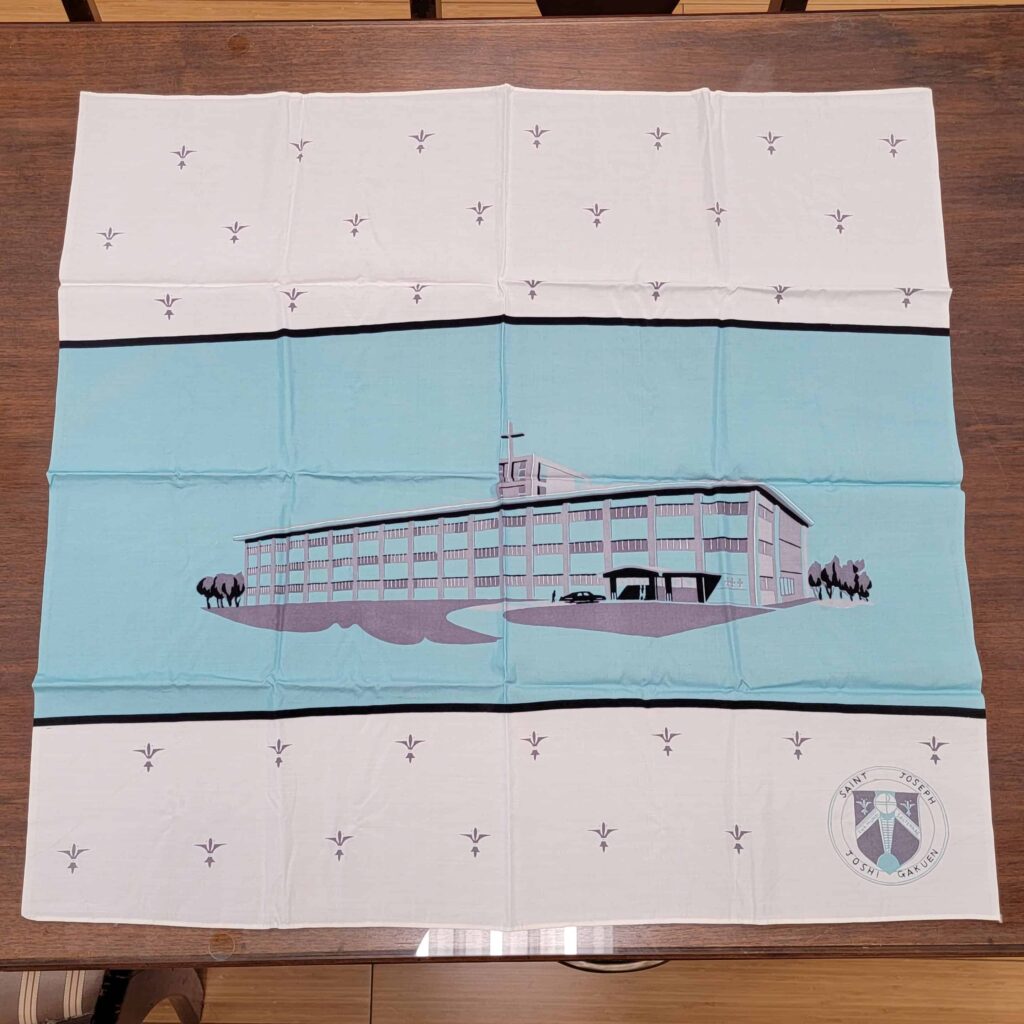
Furoshiki are used to wrap and carry items such as gifts or schoolbooks. The item is placed in the center of the cloth and then the four corners are tied together in a knot to form a handle.
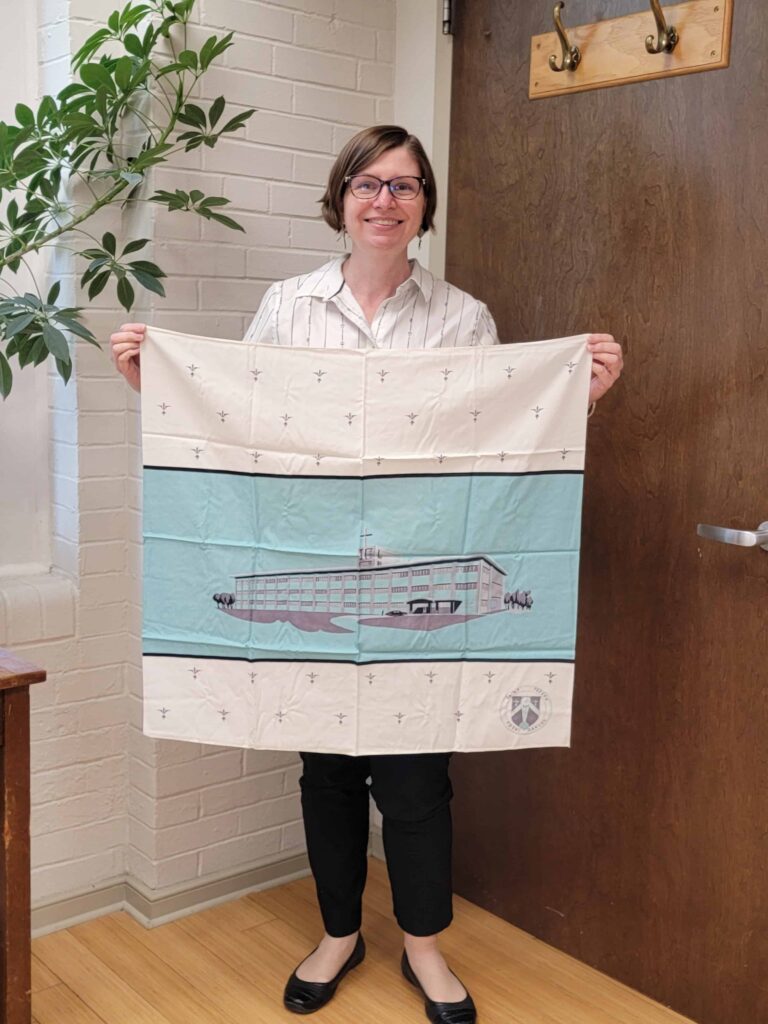
Catherine explained why she chose the furoshiki:
“I chose this artifact for its beauty and because it is one of the oldest artifacts we have from our ministries in Japan.”
Very interesting! A great insight of “what was.” I love your monthly e-mails as they always bring me fond memories of my dear Friend Sister Kathleen Eggleston!
Thank you and I send you love and prayers for all the sisters. Marie